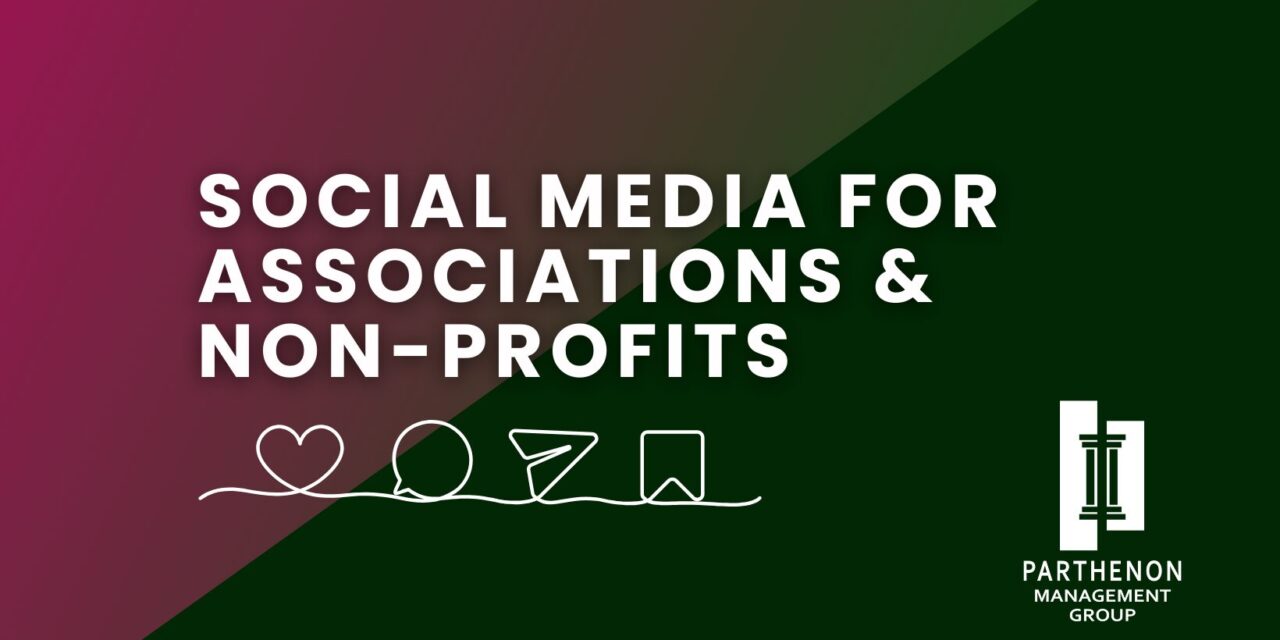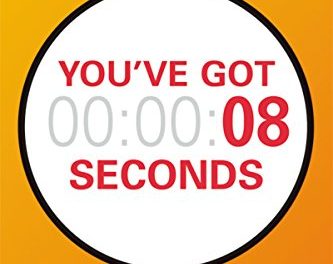It’s a new year and much has changed in the world of social media. As we enter 2025, many marketing teams are refreshing and recalibrating their social media strategies. Even those who entered the year with a solid strategy are adjusting in light of industry changes that have shook up the social media landscape over the past few weeks. So, if you’re looking for some guidance or insight for your social media for your non-profit or association, this is a great place to start. We have industry news, data, and insight to help you make informed social media decisions that will benefit your organization.
What is a social media strategy?
A social media strategy is a plan that takes into account your organization’s goals in relation to social media practices and what tactics you need to implement to achieve the results you want. Additionally, your social media strategy will include measurable performance indicators, so you can analyze how successful your efforts have been.
Why do associations need social media strategies?
Without a strategy, your social media efforts will be less effective. I always liken using a data-backed strategy to bowling with bumpers. Your bumpers–the data and industry knowledge–significantly increases your odds of hitting your target. Additionally, a well thought-out strategy will reduce wasted time and effort.
Association social media: What to know in 2025

We work with 40+ associations, and have gained extensive insight into what works, what doesn’t work, and most importantly, what’s worth the effort. Additionally, the PMG Marketing Team has years of experience executing successful social media strategies outside of the scientific association niche. Between this experience and the data we see, we’re able to provide you with some recommendations to help you narrow-in on your strategic target for an effective and accurate strategy.
The social media challenges you will face as an association
All marketing comes with challenges. Social media may be the most unique in terms of its limitations, user intent, and requirements.
User Intent with Social Doesn’t Usually Align with Association Offerings
The nature of social media is that users seek out platforms like Facebook, Twitter, and Instagram for social purposes. This means that users do not want to
- Necessarily think about work or educational pursuits while on these platforms
- Be advertised or sold to while scrolling
- Be inundated with the same messaging day after day.
These obstacles can be difficult for associations, especially scientific associations to overcome. So, what do users want in relation to their intent behind logging onto social?
- Interesting, relevant, timely, and novel updates and information–this is where thought leadership comes in
- A sense of community–which associations can provide–but, historically, is very difficult to do
- Diverse content that reflects the “social” in social media–this includes images of real people, graphics that are not overly designed.
Easier Said Than Done
While these items may seem simple or straightforward, in our experience they are a heavier lift than many realize. Most associations meet digitally (on Zoom or Teams), which limits opportunities for photos. Additionally, many associations do not hire professional photographers for their conferences, which is one of the chances to gather photos for use on social throughout the year.
Additionally, someone has to produce the thought leadership pieces to publish to social, and thought leaders are busy people. While some groups are looking to AI for all their content creation answers, social media users are savvy, and this approach can easily backfire. Users are gravitating towards authentic content. Additionally, they want a brand voice to stay consistent. Should your AI-generated content sound ‘fake,’ users will lose trust in your brand and lose loyalty.
Finally, the sense of community users seek can be nearly impossible to construct, since most online communities are grassroots efforts.
Not All Platforms Are Right for Your Association
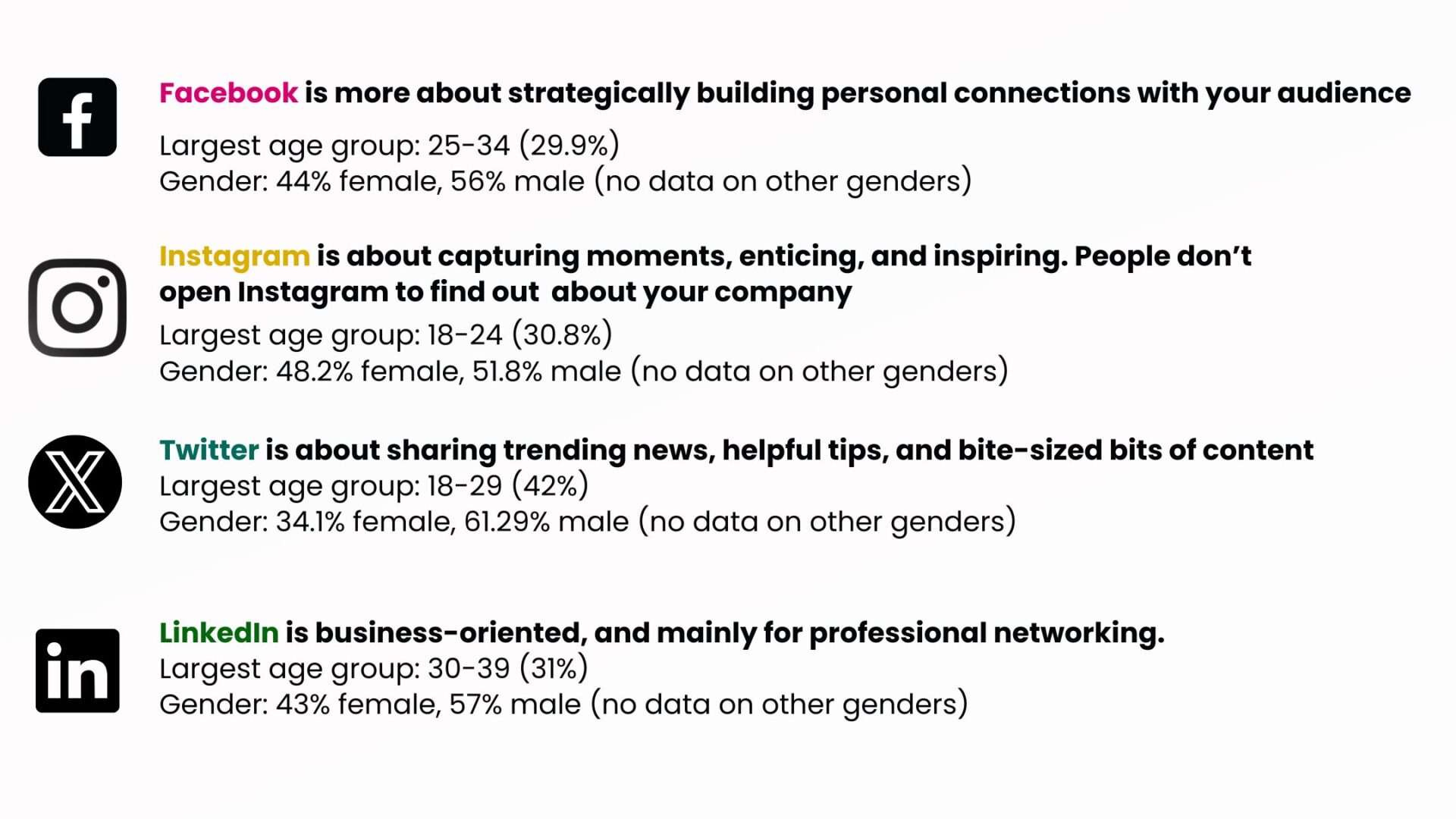
We will dive into the recent X/Twitter news further on in this article. However, it’s important to understand that the diversity of platforms arose out of differentiation in the intent and use behind each one. Furthermore, demographics do vary from platform to platform, and not all platforms are ‘home’ to your target audience.
Social Media Intentions & Demographics
FACEBOOK
User Intent: Facebook is more about strategically building personal connections with your audience.
Largest age group: 25-34 (29.9%)
Gender: 44% female, 56% male (no data on other genders)
INSTAGRAM
User Intent: Instagram is about capturing moments, enticing, and inspiring. People don’t go to Instagram to learn about companies, generally speaking.
Largest age group: 18-24 (30.8%)
Gender: 48.2% female, 51.8% male (no data on other genders)*
X
User Intent: X/Twitter is about sharing trending news, helpful tips, and bite-sized bits of content
Largest age group: 18-29 (42%)
Gender: 34.1% female, 61.29% male (no data on other genders)*
LINKEDIN
User Intent: LinkedIn is business-oriented, and mainly for professional networking
Largest age group: 30-39 (31%)
Gender: 43% female, 57% male (no data on other genders)*
BLUESKY
User Intent: Bluesky is ‘the new Twitter,’ and is about sharing trending news and building community
Gender: 30.37% female and 69.63% male.
Largest age group: 25-34 year olds (33.37%), followed by 18-24 year olds (26%)**
*Data from SproutSocial
**Data from TechCrunch
Which Platforms Do We See the Most Social Success from for Associations?
While not all results are the same from client to client, we see the most conversions and website visits from Facebook and Linkedin. Why? This is likely because the age range and intent align well with our clients.
Measuring Success Can Be Tricky
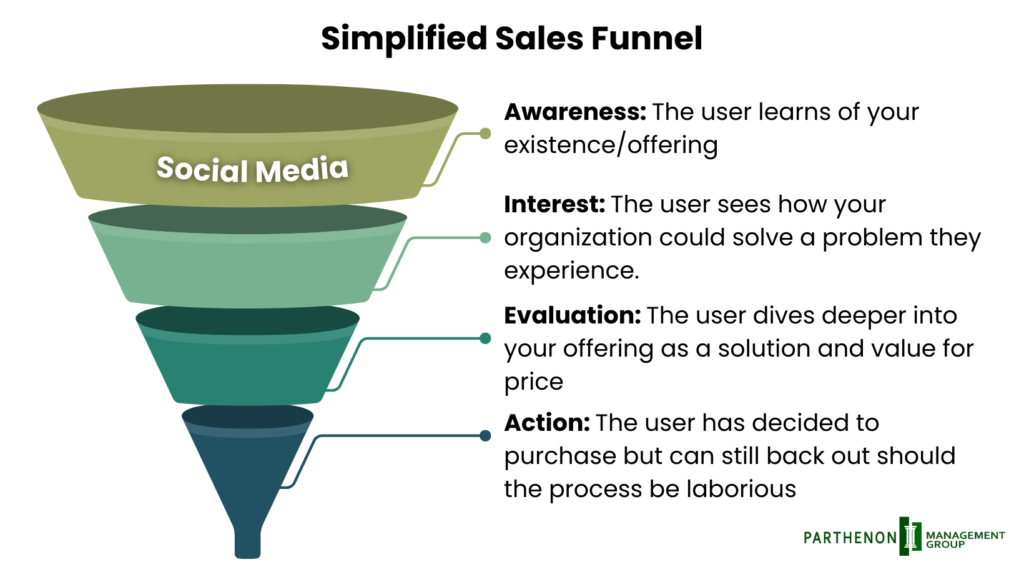
Ultimately, most associations have similar goals: increase their membership size, meeting attendance, and sponsorships. Of course, increasing involvement and other goals often arise when discussing social media. However, the reality is, across industries, social media has the lowest conversion success, and tracking and measuring those conversions can be difficult.
Why is this? When we talk about a sales funnel, awareness is the very top, followed by interest, which is to say, your audience must first know you exist, then cultivate an interest in what you have to offer before they even come close to considering making a purchase. Social media usually acts as the top of the funnel (with the exception of paid social). So, many of the metrics tracked are within the platform (reach, likes, followers), and none of these represent sales.
To measure sales, you need to set up sales paths on your website where the user can be tracked from social onto a landing page, and through the purchase process. There are tools out there that can also help you track your ROI on social media as well. Of course, these come with their own cost.
Social Media Metrics to Measure
- Reach: Measures the number of unique people who saw a piece of media content
- Engagement: How much your audience interacts with your social media posts in the form of the number of likes, comments, and shares
- Engagement rate: How many times the post was liked (etc.) divided by your number of followers
- Click-through-rate (CTR): How many people who view a social post, ad, or other piece of content click through to read more, buy, or take some other action
- Impressions: The number of times the piece of content is seen
IS SOCIAL MEDIA THE BEST USE OF YOUR MARKETING TIME & BUDGET?
Social media does serve a purpose. That purpose, for most professional associations, isn’t to gain customers. However, if your organization wants to appear ‘with-it’ and relevant, it’s a great idea to maintain a social media presence. In our experience, few professional associations ever go viral or truly climb the ranks of being influential via social media.
Additionally, the data just doesn’t back the investment, if you have to choose between SEO, membership retention marketing, and social media.
To paint the picture, here is a snapshot of the data of how some of our clients acquire new user traffic to their websites.
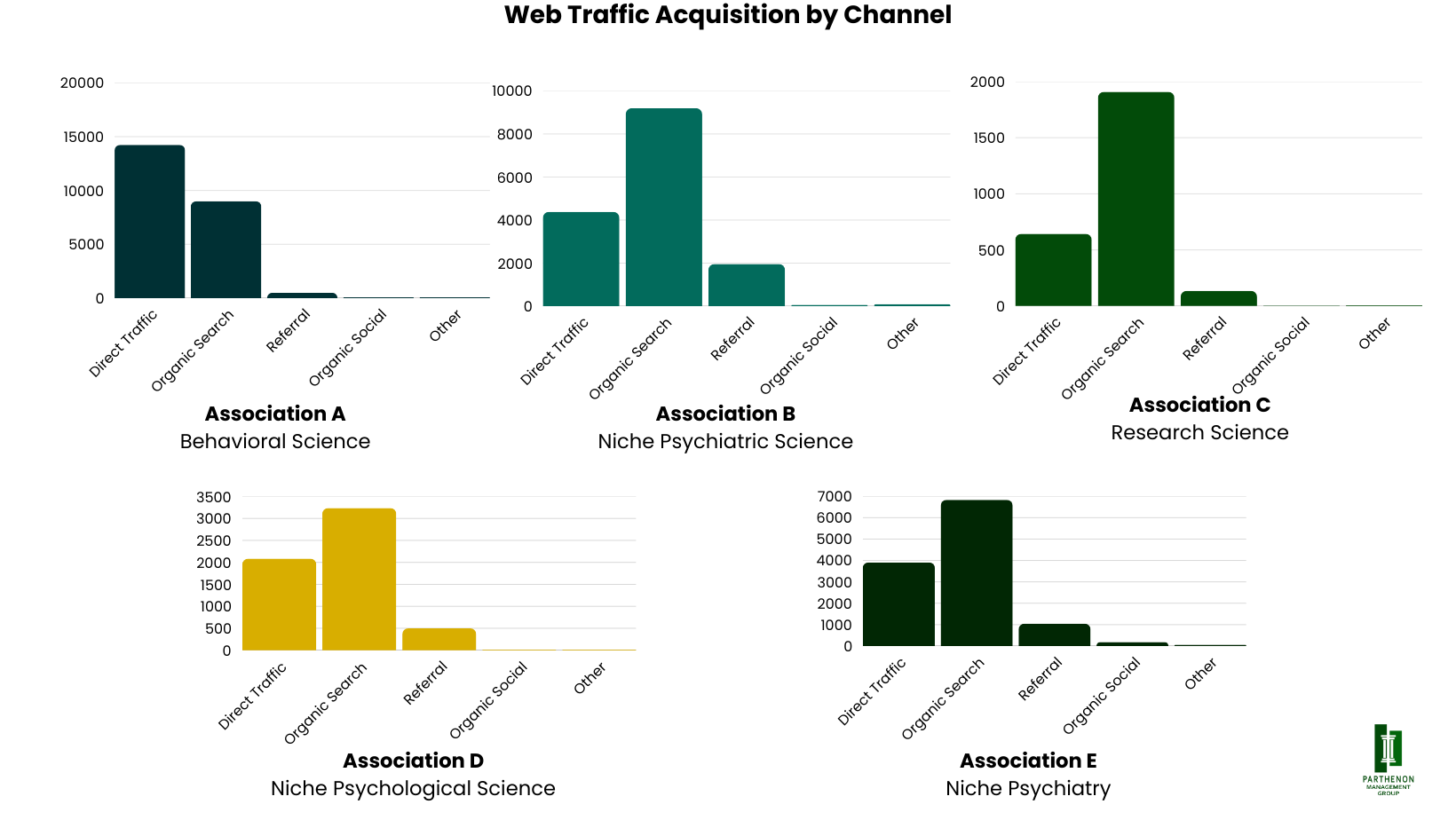
2025 Social Media Trends Associations Should Advantage of
So, what you can expect for the coming year? There are many trends that you can ride the wave of to maximize your social media marketing efforts. Here are some that we suggest.
1. Invest in Video Content
You don’t have to be on Tik-Tok to use video content to your advantage. In fact, video content is a great way to take advantage of your association’s expertise. If you’re filming a webinar, film a teaser video (about 30 seconds or shorter) to pique your followers’ interest.
2. Know Your Data
Nothing can benefit a marketer more than understanding and immersing themselves in data, and it will amplify the effects of their efforts. As we dive into 2025, access to data is better and the granularity is at an all-time high.
3. Promote Membership Through Your Members
As we’ve pointed out, nobody wants to be sold to, especially in a space like social media where we are often trying to escape the inundation of life. So, how can you promote your society, association, or non-profit without being too salesy?
- Create share-ables for your members to post
- Post testimonials or quotes from your members that highlight the value they gain from your organization
- Promote member engagement opportunities
- Garner engagement through polls and surveys
- Hype up members-only content
- Create opportunities for member perks through social engagements
4. Consider Out-of-the-Box Social Platforms like Reddit
Reddit, despite its primarily US-based userbase, offers a valuable opportunity for nonprofit associations to enhance its visibility. By actively engaging with relevant subreddits like r/neuroscience, r/neuro, and r/AskScienceDiscussion, associations can establish a strong online presence. Leveraging formats like AMAs (Ask Me Anything) based on recent publications can effectively disseminate research findings and foster direct interaction with the scientific community. This approach can significantly increase awareness and solidify your authority in your niche.
Other 2025 Social Media Trends Assocations Should Be Aware of
We can anticipate that this year will be fill with some dramatic ups, downs, and surprises. Social media is affected by the zeitgeist of society. However, we can be proactive and plan for what we know is in store for us this year. I do urge you to remember that swaying too far into a reactionary approach can lead to long-term instability and wasted effort.
X/Twitter’s Mass Exodus
It’s no secret that Twitter/X has been controversial for years. However, with the recent US election, the platform’s controversial nature peaked, and X users jumped ship. In fact, X lost over a million users within just days of the election. Making matters worse, X updated their terms and conditions on November 15, 2024 to increase the amount of involvement of AI in analyzing user content.
Where are users migrating to post-X? Bluesky. Since the US election, Bluesky has been a refuge for ex-Xers. The platform gained over 1.5 million users since the election.
Should Your Organization Join Bluesky?
Maybe. Ultimately, Blueksy is still a very new platform with just a small fraction of users compared to others. However, the future is open skies for the platform.
When it comes to your social media strategy, you will really want to weigh the risks, benefits, and time it takes to establish yourself on the platform.
What Makes Bluesky Unique as a Social Media Platform?
Bluesky is a decentralized social media platform. As far as the Bluesky brand is concerned, the network is considered highly democratic and free of corporate-interest influence. Which significantly differs from all the key players in the industry right–but not significantly different from where all social media platforms begin. If you’re aware of how Facebook, Reddit, Instagram, and Myspace began–as non-commercialized platforms where people can connect, it’s easy to understand how Bluesky functions. Additoinally, it’s important to point out that Bluesky’s evolution may follow the same track as its predecessors.
The motivation behind the develop the platform is also signficant in understanding Bluesky’s identity and vision. Bluesky was developed by former Twitter CEO Jack Dorsey, hence, its simliarities to X. And the idea that Dorsey has a ‘bone to pick’ with the social media giant makes this platform’s future unique, since their leadership may buck against the commericalization of the platform on a more long-term basis.
Here are Bluesky primary differentiators and what to keep in mind for your association:
Decentralized control: Bluesky is decentralized network rather than one individual company.
User control: Bluesky provides users greater control of what content appears on their feeds.
User-Interest Algorithms & Suggested Posts: As of now, Bluesky does not serve suggested content. Users have full control over what they see on the platform. This can make getting found as an association difficult.
Open standards: Bluesky prides itself open standards and transparency.
No verification badges: Reflecting its democrative identity, Bluesky doesn’t have verification badges… ‘all users are equal.’
No monetization tools: Bluesky doesn’t offer monetization tools for creators.
No paid ads: Bluesky doesn’t support or serve paid ads.
No analytics tools: Want to track your metrics. Start a spreadsheet. Bluesky doesn’t offer analytics tools.
When Bluesky first launched, users needed an invite to be able to join. This reduced the presence of bots and other forms of fake accounts.
Functionalist and Features of Bluesky
- Similar to X, Bluesky users can post updates, images, videos, and links. They can also create threaded conversations.
- Users can reply, repost, and like posts.
- Users can create their own custom algorithmic feeds.
- Users can customize hashtags.
Key Considerations with Bluesky:
- It is new and may not last. Consider the longevity of other platforms like Vine and Google+ and it’s easy to feel skeptical about the long-term lifespan of Bluesky.
- As a new platform, most scheduling tools do not have Bluesky integrations. This means you will need to manually post to the platform, which ultimately takes time.
- It takes time to set up a profile and build content. To build your social media identity, you must have a history of posts. This requires time and effort that may include an increase in content creation over the next weeks and months.
- The nature of the platform often leads to higher engagement. Bluesky prides itself on privacy and a lack of sponsorship manipulation. This means that interactions and engagement are often easier to come by.
- The current user base is growing, but still tiny. High estimates count Bluesky’s user base as 25 million, which is small for a social media platform. For comparison, I have listed user bases of most popular platforms below. Of course, this could mean in a smaller pond, it’s easier to be a big fish.
Bluesky’s international reach is limited. As of right now, the majority of Bluesky users are American. If your association is international, you may not get the reach you desire.
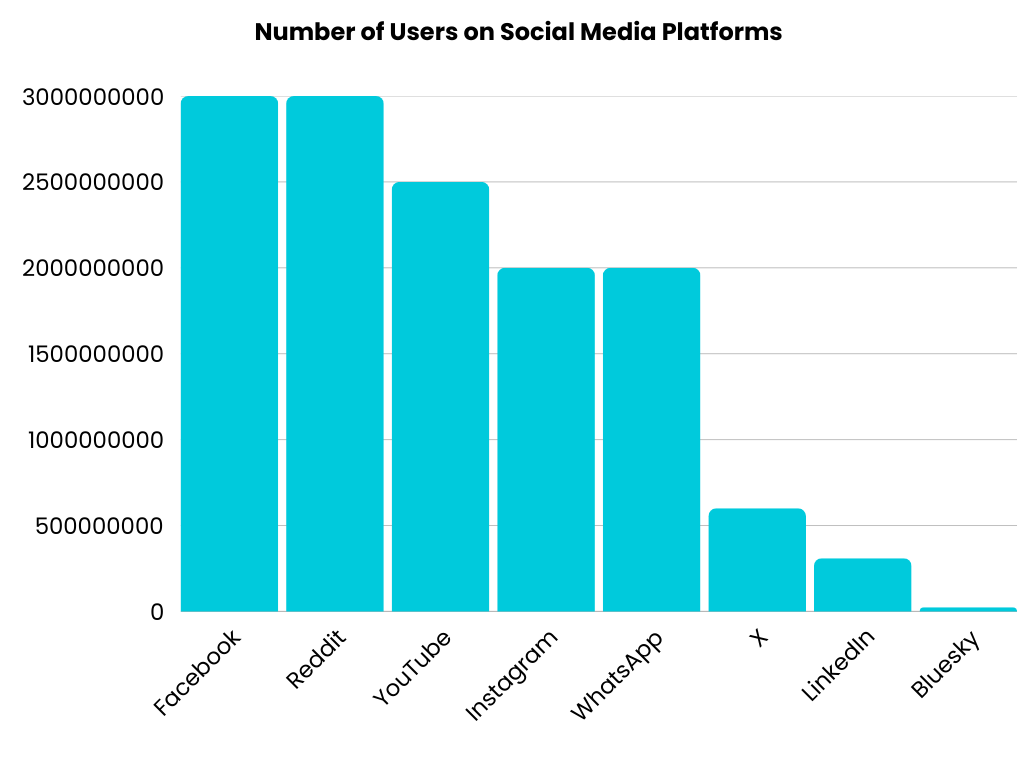
Facebook: 3 billion users worldwide
Reddit: 3 billion users worldwide
YouTube: 2.5 billion users worldwide
Instagram: 2 billion users worldwide
WhatsApp: 2 billion users worldwide
X: 600 million users worldwide
LinkedIn: 310 million users worldwide
Bluesky: 25 million users worldwide
How Much staff time is required if your association adds a new social media platform?
Assuming an average of 5 posts per month and 30 minutes per post for caption writing, graphic creation, editing, and scheduling, the estimated staff time per year for managing an additional social media profile would be approximately 30 hours.
Here’s a breakdown of the calculation:
- Posts per month: 5
- Time per post: 30 minutes
- Total minutes per month: 5 posts/month * 30 minutes/post = 150 minutes/month
- Total minutes per year: 150 minutes/month * 12 months = 1800 minutes/year
- Total hours per year: 1800 minutes/year / 60 minutes/hour = 30 hours/year
Here’s the recalculated staff time per year, for manual scheduling for platforms like Bluesky that do not integration with scheduling platforms:
- Posts per month: 5
- Time per post: 30 minutes (original) + 5 minutes (manual scheduling) = 35 minutes
- Total minutes per month: 5 posts/month * 35 minutes/post = 175 minutes/month
- Total minutes per year: 175 minutes/month * 12 months = 2100 minutes/year
- Total hours per year: 2100 minutes/year / 60 minutes/hour = 35 hours/year
The 2025 Tik-Tok Ban
Tik-Tok is officially banned in the United States. This has resulted in a widespread and extreme reaction from users. how will this affect associations? Well, it likely won’t have a huge impact on most associations since this channel isn’t effective or utilized by most associations (based on user intent and user demographics). Tik-Tok is hihgly effective in conversions for consumer-packaged goods, but doesn’t result in conversions for professional associations (not surprising, right?_
But we can predict that Tik-Tok users will be looking for a new outlet to feed their need for video content. According to Forbes, most businesses are shifting their video content to Instagram Reels, YouTube Shorts, and Snapchat.
Set Your Association or Non-Profit Up for Social Media Success
The social media landscape is constantly evolving, presenting both exciting opportunities and unique challenges for associations. In 2025, a well-defined social media strategy is more crucial than ever. By understanding user intent, leveraging video content, and carefully selecting the right platforms, associations can effectively engage their audiences, build community, and achieve their goals.
However, navigating this dynamic environment requires a data-driven approach and a willingness to adapt. Continuously monitor your performance, analyze your results, and adjust your strategies accordingly. Remember, social media is a long-term investment. By consistently creating high-quality, authentic content and fostering genuine connections with your members, you can build a strong online presence that supports your association’s mission and drives meaningful impact.

